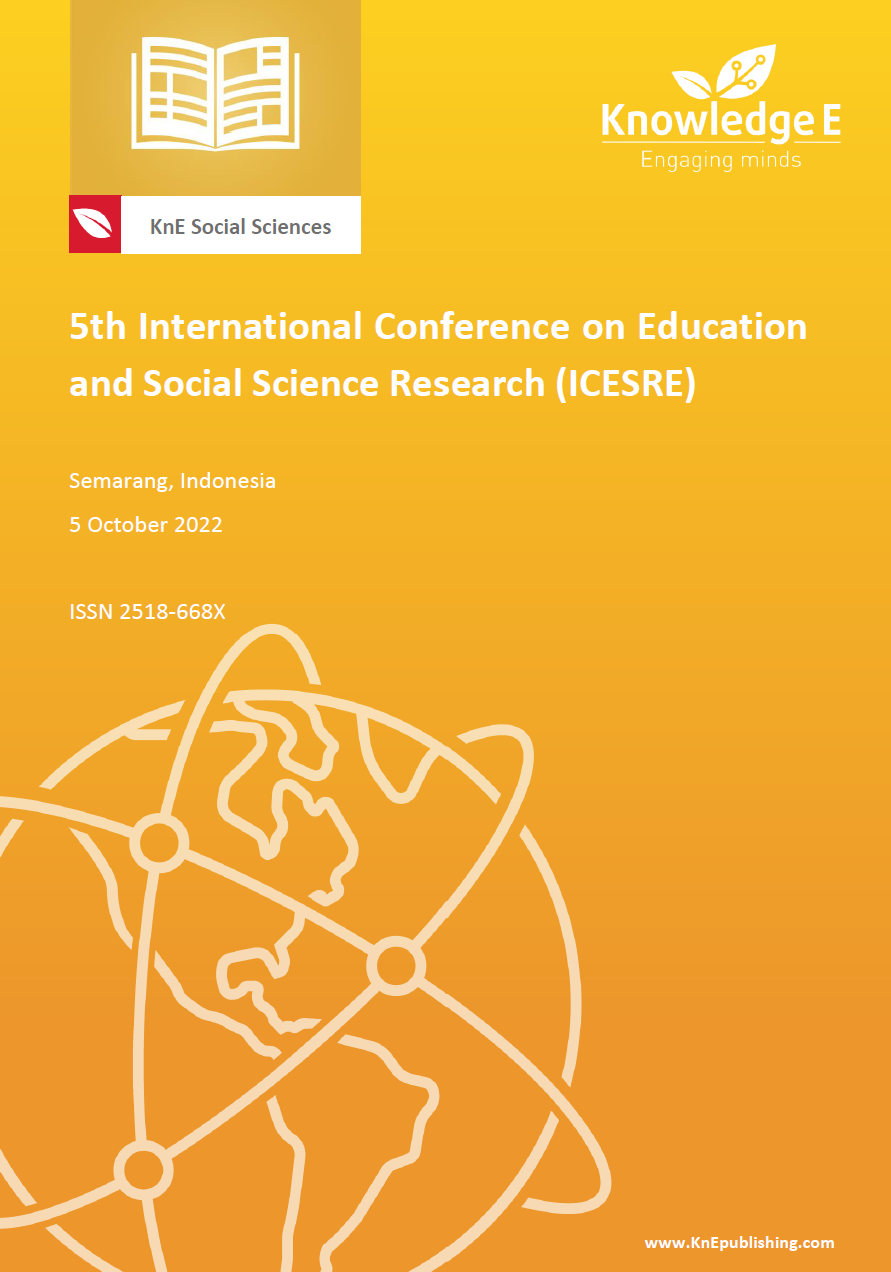Assessing School Management In Santa Theresia Kindergarten, Central Java
DOI:
https://doi.org/10.18502/kss.v7i19.12433Abstract
This study aims to determine the management of education in Santa Theresia Kindergarten. This study uses a descriptive method with a qualitative approach. The research subjects are principals, teachers, and parents. The subjects were selected through a purposive sampling technique. Data were analysed by systematically searching and structuring interview transcripts, recordings, photos, and documents. The results showed that the planning of educational programs at the Santa Theresia Kindergarten school, in general, has been well prepared. Additionally, the management organization in Santa Theresia Kindergarten, in general, has reflected a relevance between the abilities and skills of personnel and educational needs. Lastly, The implementation of education in Santa Theresia Kindergarten is directed at the learning process running well, effectively, and fun. In general, of the eight pre-set standards, several standards are doing well, namely financing standards, content standards, process standards, educators and education personnel standards, infrastructure standards, and financing standards. At the same time, the standard that requires more attention is the standard of assessment because teachers are not consistent in conducting the assessment
Keywords: Kindergarten, School management, educational program
References
[2] Suryana D, Rizka N. Manajemen pendidikan anak usia dini berbasis akreditasi lembaga.
[3] Nurhafizah N. Pelatihan pembuatan media pembelajaran anak usia dini menggunakan bahan sisa. Early Childhood: Jurnal Pendidikan. 2018;2:44–53.
[4] Wijoyo H. Socialization of the Accreditation Asessment System (SISPENA) of the National Accreditation Board for Early Childhood Education (PAUD) and Non Formal Education (PNF) in Bengkalis, Riau Province. Jurnal Humanities Pengabdian Kepada Masyarakat. 2020;1:23–29.
[5] Bredekamp VS. The reliability of the instruments and procedures of a national accreditation system for early childhood programs (volumes i and ii). University of Maryland, College Park; 1985.
[6] Seefeldt C. Teacher certification and program accreditation in early childhood education. The Elementary School Journal. 1988;89:241–251.
[7] Ray A, Bowman B, Robbins J. Preparing early childhood teachers to successfully educate all children: The contribution of state boards of higher education and national professional accreditation organizations. Chicago: Erikson Institute; 2006.
[8] Musa S, Uthartianty R. The efforts of early-childhood education managers in achieving accreditation to improve the quality of education organization. Journal of Nonformal Education. 2019;5:138–144.
[9] Cobbold C, Boateng P. How confident are kindergarten teachers in their ability to keep order in the classroom? A study of teacher efficacy in classroom management. Journal of Education and Practice. 2016;7:181–190.
[10] Zebua M, Siburian P. Training management model of kindergarten teacher in Medan. 4th Annual International Seminar on Transformative Education and Educational Leadership (AISTEEL 2019); 2019 Dec. Atlantis Press; 2019. p. 593–595).
[11] Rukhiyah Y, Notosudjono D, Sunaryo W. Evaluation of PAUD (early childhood education) accreditation program in Serang City. Research, Society and Development. 2020;9:e9759109455.
[12] Surahman S. The role of BAN PAUD AND PNF in improving academic quality. Aksara: Jurnal Ilmu Pendidikan Nonformal. 2022;8:879–886.

